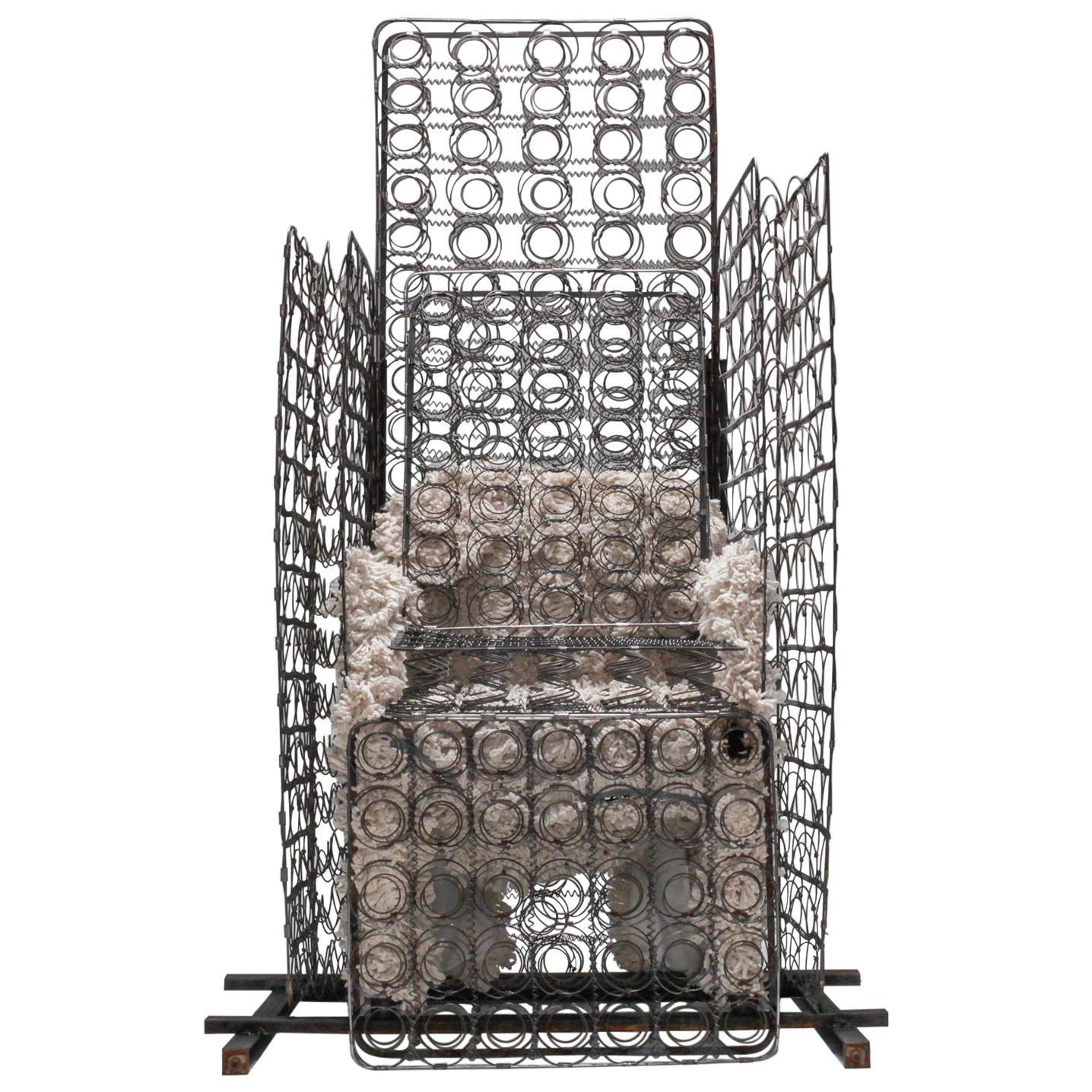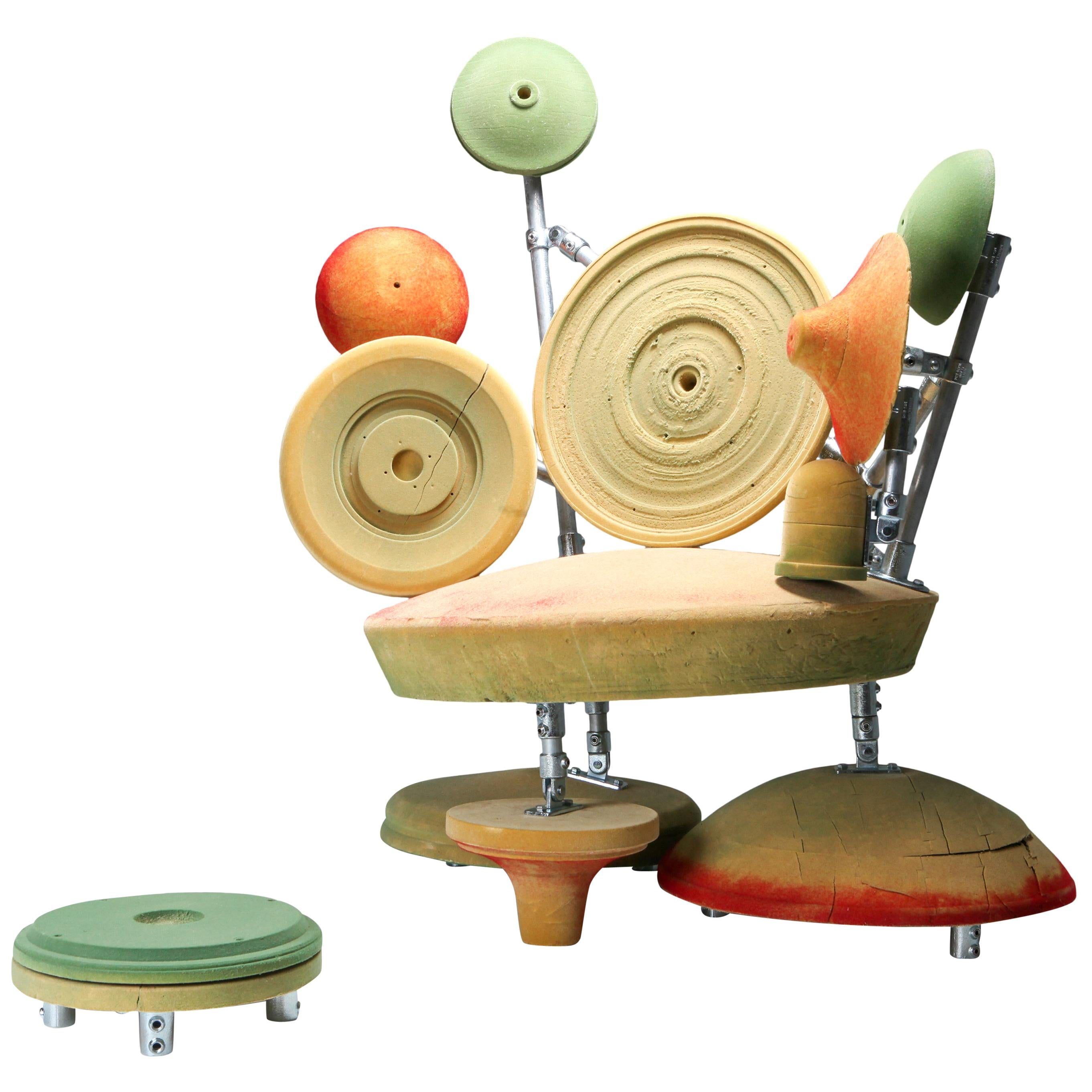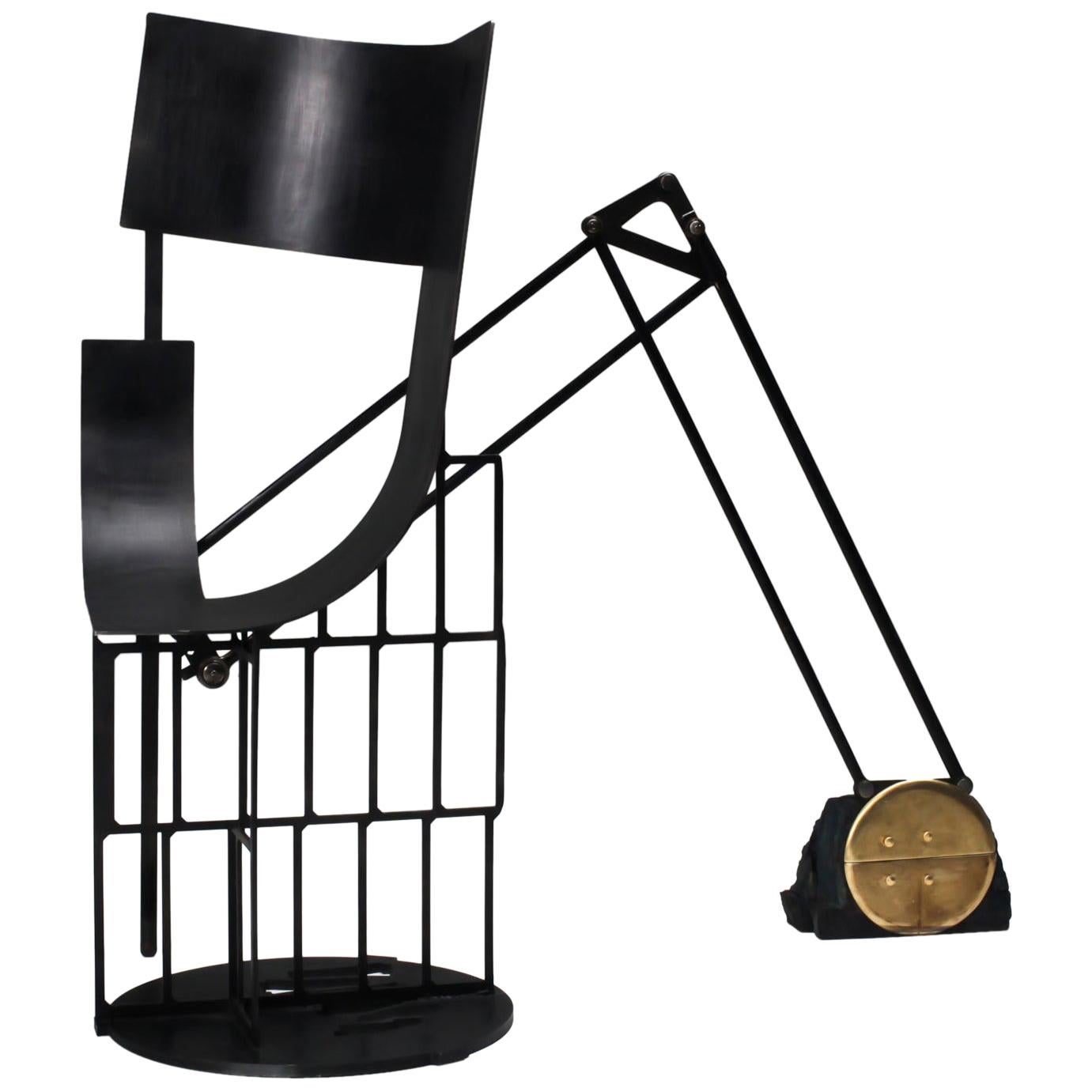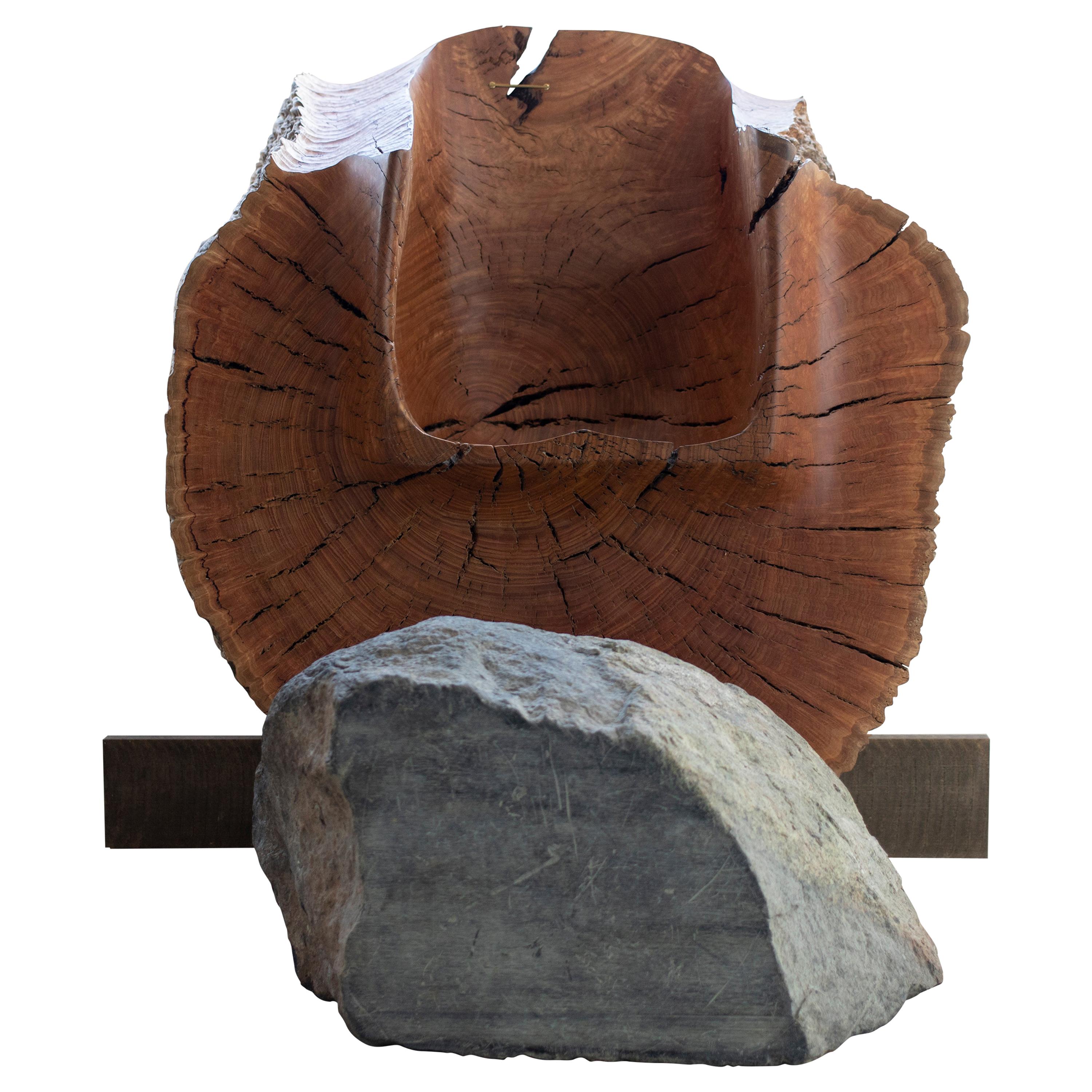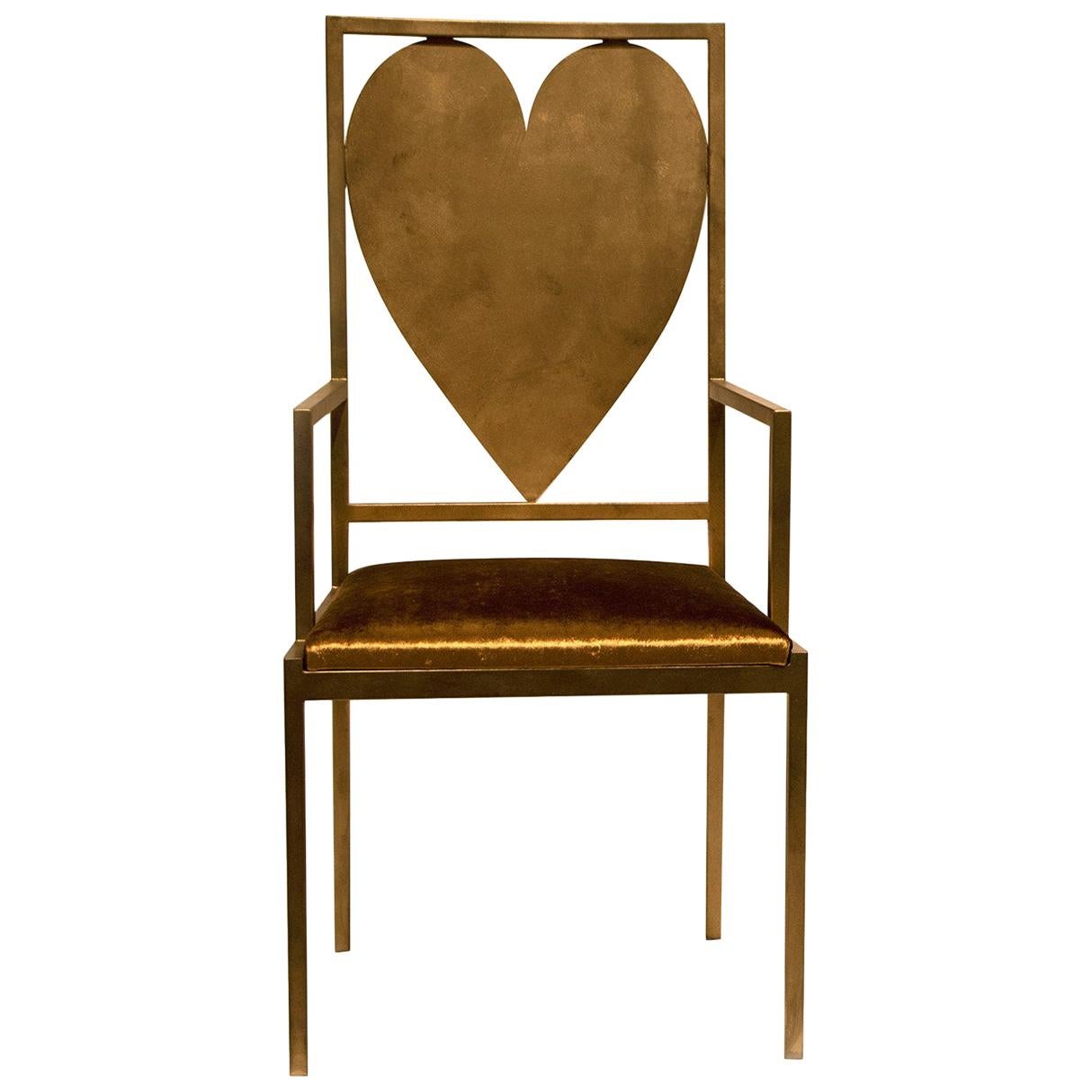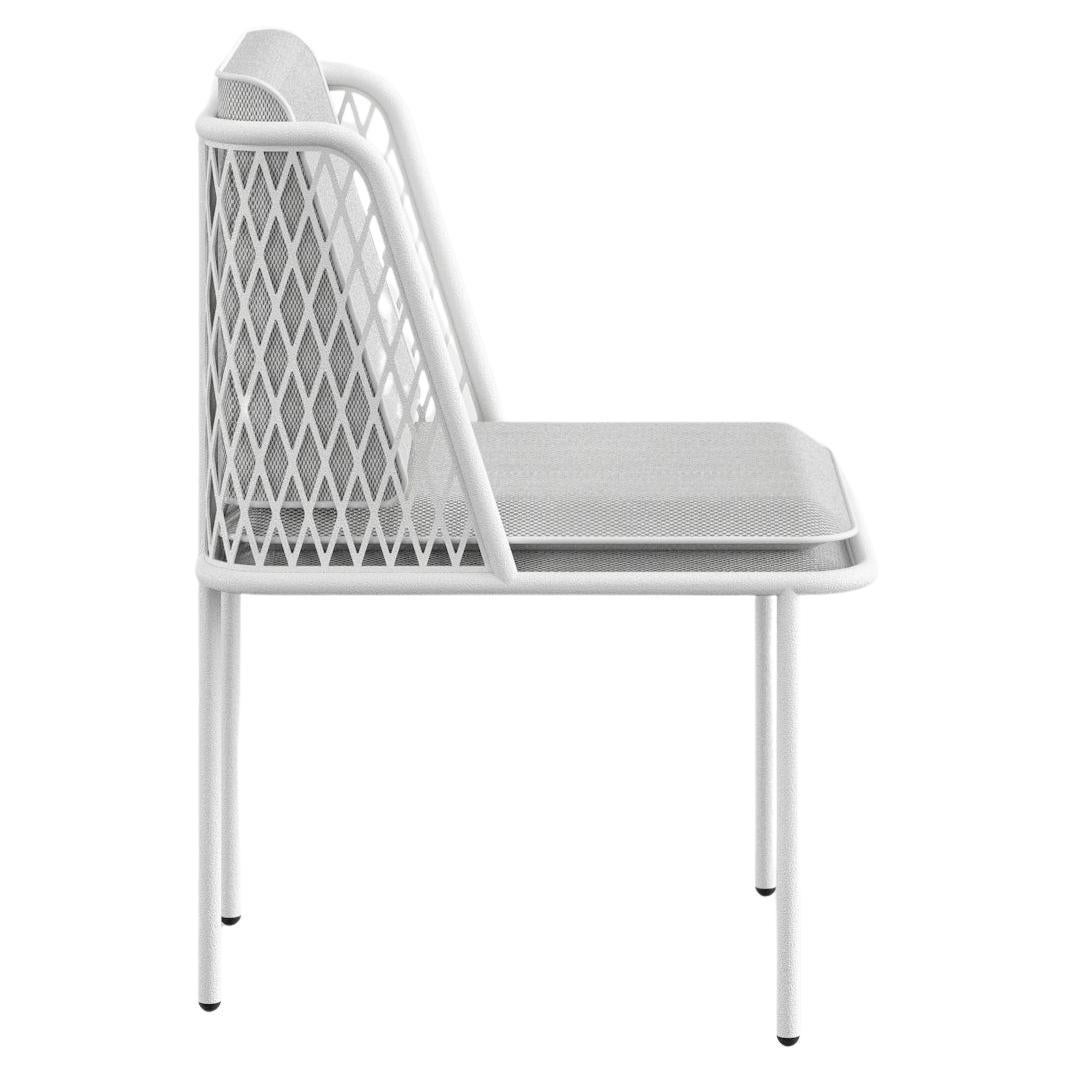Rolling Throne, BE
About the Item
- Creator:Lionel Jadot (Artist)
- Dimensions:Height: 59 in (149.86 cm)Width: 47 in (119.38 cm)Depth: 47 in (119.38 cm)
- Materials and Techniques:
- Place of Origin:
- Period:
- Date of Manufacture:2019
- Production Type:New & Custom(One of a Kind)
- Estimated Production Time:Available Now
- Condition:
- Seller Location:New York, NY
- Reference Number:1stDibs: LU905316616282
Lionel Jadot
Lionel Jadot is as much an inventor as he is a designer. The Brussels-based furniture maker and tinkerer defies categorization with a body of work linked only by the use of repurposed materials. His one-of-a-kind chairs, statement-making tables and eclectic lamps overflow with personality and charm. Jadot is also an interior architect known for creating energetic spaces with a retro yet futuristic feel.
Jadot comes from a long line of custom furniture designers and was born in Belgium in an apartment above a design studio. As a child, he would walk through the family workshop every day after school, picking up the scrap material to experiment with in his room. He took over the family business when he was just 18, and the self-taught Jadot reveled in the freedom to create whatever designs he wanted.
At his eponymous atelier, Jadot works on projects for private homes as well as restaurants, bars and hotels. While his designs and interiors can look chaotic at first glance — with his stone chairs and imposing Organic Modern-style tables of marble and wood — the disparate elements come together in a harmonious balance underpinned by quality and craftsmanship.
In 2019, Jadot also established Zaventem Ateliers in the village of Zaventem outside of Brussels. The former industrial space has become a hub for a community of established and emerging designers and artists.
Jadot's creations are regularly exhibited at design fairs and events in Brussels and around Europe. In 2020, his Crushed Seat (2018) was presented by Todd Merrill Studio director Dallas Dunn at the Brussels Collectible Design Fair. His work was once again exhibited at the Collectible Design Fair 2021 with Antwerp-based Everyday Gallery. Jadot has also expanded into Milan, Italy, with a project called Baranzate Ateliers, which enjoyed a strong showing at Milan Design Week 2022.
On 1stDibs, find Lionel Jadot seating, tables, lighting and more.
- ShippingRetrieving quote...Ships From: New York, NY
- Return PolicyThis item cannot be returned.
- Babel Crane, BEBy Lionel JadotLocated in New York, NYThe mixed-media chandelier, Babel Crane, exemplifies Jadot’s ability to elevate common objects by ignoring their original intent and juxtaposing them with high end materials, from ra...Category
2010s American Chandeliers and Pendants
MaterialsBrass, Steel
- Blue Tie Roofing, BEBy Lionel JadotLocated in New York, NYCreated from a solid rosewood, 18th century Dutch cabinet, black tie roofing is Jadot’s reflection on the evolution of our civilization, and...Category
2010s Belgian Abstract Sculptures
MaterialsGold Leaf
- Lionel Jadot, Crushed Seat, BEBy Lionel JadotLocated in New York, NYCrushed seat, Jadot’s juxtaposed material assemblage, is a colossal manifestation of his unusual creative process. Constructed of reclaimed MDF that has been painted in vibrant color...Category
2010s Belgian Loveseats
MaterialsFoam, Reclaimed Wood, Paint
- Luncheon on the Grass, BEBy Lionel JadotLocated in New York, NYCreated from disparate elements, Industrial netting, crane straps, military tents, and a eighteenth century textile, Jadot’s tremendous tapestry, Luncheon on the Grass...Category
2010s Belgian Tapestries
MaterialsPatent Leather, Tapestry
- Lionel Jadot, Fractal Dragon, BEBy Lionel JadotLocated in New York, NYFractal Dragon, Jadot’s expansive graphic cabinet, reawakens an early 20th century Japanese ink drawing depicting a floating dragon. In traditional Jap...Category
2010s Belgian Cabinets
MaterialsWalnut
- Lionel Jadot, Show Clothes, BEBy Lionel JadotLocated in New York, NYLionel Jadot’s mixed media and glass wardrobe, titled Show Clothe was conceived for a dressing room, the interior becoming an installation for its inner...Category
2010s Belgian Cabinets
MaterialsBrass, Copper, Stainless Steel
- Functional Art Chair / Throne "'Spring Swab" by Lionel JadotBy Lionel JadotLocated in Antwerp, BECollectible design / Functional art, Lionel Jadot for Everyday Gallery, Belgium 2020 Born in Brussels in 1969, Lionel Jadot is an interior designer, artist, designer, filmmaker, adventurer. But all at once, preferably. Lionel Jadot is firing on all cylinders. ‘I never throw anything, I pick up everything. Not having a green thumb, I’m trying cuttings, weddings against nature. I never forget a line.’ He’s inviting us in subtle, off-beat worlds, on the edge of reality. Its material is made of dilated time. A wandering spirit, he seeks a protective balance in a hostile world. It is his constant questioning: what happens to the place where we live? For Lionel Jadot, everything is object, everything is history. He draws from other places, other times, and seeks what’s linking them. He sews, stitches, unpicks, blends materials, combines eras. He will enshrine some wood essence in metal, some mineral in a plant, the old in the new. ‘I take extra care to the joint between two materials.’ With him, there is always some play in the parts, as in a piece of machinery. From a kingdom to another, he provokes organic, viral growths, generating energy. Linking past and future, he never forgets a line. ‘I accumulate them.’ He’s inviting us in subtle worlds, off-beat, on the edge of reality. Are we in 1930 or in 2030? Both, no doubt. Its material is made of dilated time. The eye goes hand in hand with the ear. ‘When I walk into a place, I listen to the good (or bad) it does to me. An ineffable feeling.’ He recreates mutant buildings, like the future Royal Botanique, a 5 stars hotel housed in the Church of the Gesu, a former convent behind a 1940 façade. He talks about a ‘hotel object’, which he holds and turns around in his hand. A wandering spirit, he’s flirting with retro-futurism. The Jam, another hotel, is intended for urban travelers, fans of swiftness, fluidity and hospitality. He designs interiors as a set of objects: a motorcycle cut in concrete becomes a bar counter. He finds gothic cartoon echoes, from the likes of Moebius, Alejandro Jodorowsky, Enki Bilal, sets from Garage Hermétique and Blade Runner, a protective balance in a hostile world. Discovering Jadot’s little cosmos of collected and accumulated goods, it becomes clear that every element has its own story. I tried to collect them and in turn, devour them in the coming paragraphs. But first: the show is best experienced seated, barring the distinction between object of use and object of attention, they invite for different types of conversation. The seats, chairs, thrones all make us think of our own physical comportment, and of how the seat lends grandeur to the person sitting on it, by crowning its presence. The crackling floor, the felt walls and the diffuse light slow you down into an oddly absorbing environment, in which you are left puzzled. In the eclectic collages of objects, bits and pieces collected all over the world come together in ways practical, and logical, though possibly only in the artist’s mind. All his finds eventually seem to fall into place. Starting with the mere conception of a chair, rather than with a set-out plan or sketch, the works are intuitively construed out of an archive that one can only imagine the dimensions of. Things forgotten by others, precious for him, were all once designed for their own purpose. Here they find their fit as a base, a closing system or a balancing element. The first piece that opens the exhibition, the most throne-like of all seats in the show, builds around a chair of his grandmother, protected by mops, and harassed with bed springs. As you enter the space, you pass by a shell leaning over a yellow seat that stems from his old Mustang, and find a white stool piece with Mexican leather dog training whips— the white building blocks of which turn out to be dried molding material, as found and broken out of a bucket by workers every morning. Further, the stone piece that reminds one of the stone age, is indeed made of 400 million old rocks, and the soft seats are lent from construction, where these strokes of textile carry up the heaviest goods. In the corner — but as you walk this walk please be seated on any of the thrones and experience the work for a moment— the green fluffy cover is made by XXXX who remakes cartographies of warzones, one of which is here mounted on a flexible fishing chair. On an experience level, the conversation chair enhances self-confidence, while putting you literally in a good spot with the person you’re conversing with. The lamp perfectly shows the playful Cadavre Exquis...Category
2010s Belgian International Style Armchairs
MaterialsMetal
- 'T-Shink' Sprayed Textile Throne Chair, Lionel Jadot, Belgium, 2020By Lionel JadotLocated in Antwerp, BEThe 'T-Shink' functional art throne chair is constructed of elements from wooden moulds which date back to the 1950s and originally used to make stainless steel sinks...Category
2010s Belgian Post-Modern Chairs
MaterialsOther
- Functional art Throne / Chair "Black Caterpillar" by Lionel Jadot, 2020By Lionel JadotLocated in Antwerp, BECollectible Design / Functional art, Lionel Jadot for Everyday Gallery, Belgium 2020 The chair made with scrap metal laser cuts and a prototype element of one of Lionel’s coffee table, the legs are made with the pantograph of a drawing table from the 30s, hung on an inked piece of Japanese wood from the 19th piece of furniture. Born in Brussels in 1969, Lionel Jadot is an interior designer, artist, designer, filmmaker, adventurer. But all at once, preferably. Lionel Jadot is firing on all cylinders. ‘I never throw anything, I pick up everything. Not having a green thumb, I’m trying cuttings, weddings against nature. I never forget a line.’ He’s inviting us in subtle, off-beat worlds, on the edge of reality. Its material is made of dilated time. A wandering spirit, he seeks a protective balance in a hostile world. It is his constant questioning: what happens to the place where we live? For Lionel Jadot, everything is object, everything is history. He draws from other places, other times, and seeks what’s linking them. He sews, stitches, unpicks, blends materials, combines eras. He will enshrine some wood essence in metal, some mineral in a plant, the old in the new. ‘I take extra care to the joint between two materials.’ With him, there is always some play in the parts, as in a piece of machinery. From a kingdom to another, he provokes organic, viral growths, generating energy. Linking past and future, he never forgets a line. ‘I accumulate them.’ He’s inviting us in subtle worlds, off-beat, on the edge of reality. Are we in 1930 or in 2030? Both, no doubt. Its material is made of dilated time. The eye goes hand in hand with the ear. ‘When I walk into a place, I listen to the good (or bad) it does to me. An ineffable feeling.’ He recreates mutant buildings, like the future Royal Botanique, a 5 stars hotel housed in the Church of the Gesu, a former convent behind a 1940 façade. He talks about a ‘hotel object’, which he holds and turns around in his hand. A wandering spirit, he’s flirting with retro-futurism. The Jam, another hotel, is intended for urban travelers, fans of swiftness, fluidity and hospitality. He designs interiors as a set of objects: a motorcycle cut in concrete becomes a bar counter. He finds gothic cartoon echoes, from the likes of Moebius, Alejandro Jodorowsky, Enki Bilal, sets from Garage Hermétique and Blade Runner, a protective balance in a hostile world. Discovering Jadot’s little cosmos of collected and accumulated goods, it becomes clear that every element has its own story. I tried to collect them and in turn, devour them in the coming paragraphs. But first: the show is best experienced seated, barring the distinction between object of use and object of attention, they invite for different types of conversation. The seats, chairs, thrones all make us think of our own physical comportment, and of how the seat lends grandeur to the person sitting on it, by crowning its presence. The crackling floor, the felt walls and the diffuse light slow you down into an oddly absorbing environment, in which you are left puzzled. In the eclectic collages of objects, bits and pieces collected all over the world come together in ways practical, and logical, though possibly only in the artist’s mind. All his finds eventually seem to fall into place. Starting with the mere conception of a chair, rather than with a set-out plan or sketch, the works are intuitively construed out of an archive that one can only imagine the dimensions of. Things forgotten by others, precious for him, were all once designed for their own purpose. Here they find their fit as a base, a closing system or a balancing element. The first piece that opens the exhibition, the most throne-like of all seats in the show, builds around a chair of his grandmother, protected by mops, and harassed with bed springs. As you enter the space, you pass by a shell leaning over a yellow seat that stems from his old Mustang, and find a white stool piece with Mexican leather dog training whips— the white building blocks of which turn out to be dried molding material, as found and broken out of a bucket by workers every morning. Further, the stone piece that reminds one of the stone age, is indeed made of 400 million old rocks, and the soft seats are lent from construction, where these strokes of textile carry up the heaviest goods. In the corner — but as you walk this walk please be seated on any of the thrones and experience the work for a moment— the green fluffy cover is made by XXXX who remakes cartographies of warzones, one of which is here mounted on a flexible fishing chair...Category
2010s European Chairs
MaterialsBrass, Steel
- Pommele Eucalyptus ThroneBy Taylor DonskerLocated in Sebastopol, CAThe live edge pomelle Eucalyptus "throne" by Taylor Donsker features a stunning array of detail and craftsmanship. Beginning with a section of rare Pommele Eucalyptus, Taylor methodi...Category
2010s American Organic Modern Armchairs
MaterialsGranite, Brass, Bronze
- Heart Throne ChairBy Giulia LigrestiLocated in Milan, ITImbued with vintage flair and artistic appeal, this armchair is anything but ordinary. Part of the Imperfect Love Collection which is, in Ligreste's words "A hymn to love wrought in ...Category
2010s Italian Modern Chairs
MaterialsIron
- Throne Outdoor ChairBy AutobanLocated in Kemankeş, 34Autoban reinterprets the studio’s popular Throne Series for outdoor use with a new Material application. Built from tubular steel profiles and expanded metal sheets with diamond-shap...Category
21st Century and Contemporary Turkish Scandinavian Modern Chairs
MaterialsMetal
Recently Viewed
View AllRead More
Is Lionel Jadot the Willy Wonka of Upcycled Belgian Design?
From his massive collaborative workshop in a former paper factory, the designer concocts funky furniture from disused materials, as well as luxe hotel interiors like the new Mix Brussels.
10 Covetable Things You’ll Find at Design Miami
Get a sneak peak at some of the singular pieces that will be on display at this year's show, which range from vintage masterpieces by legendary makers to innovative creations from emerging talents.
